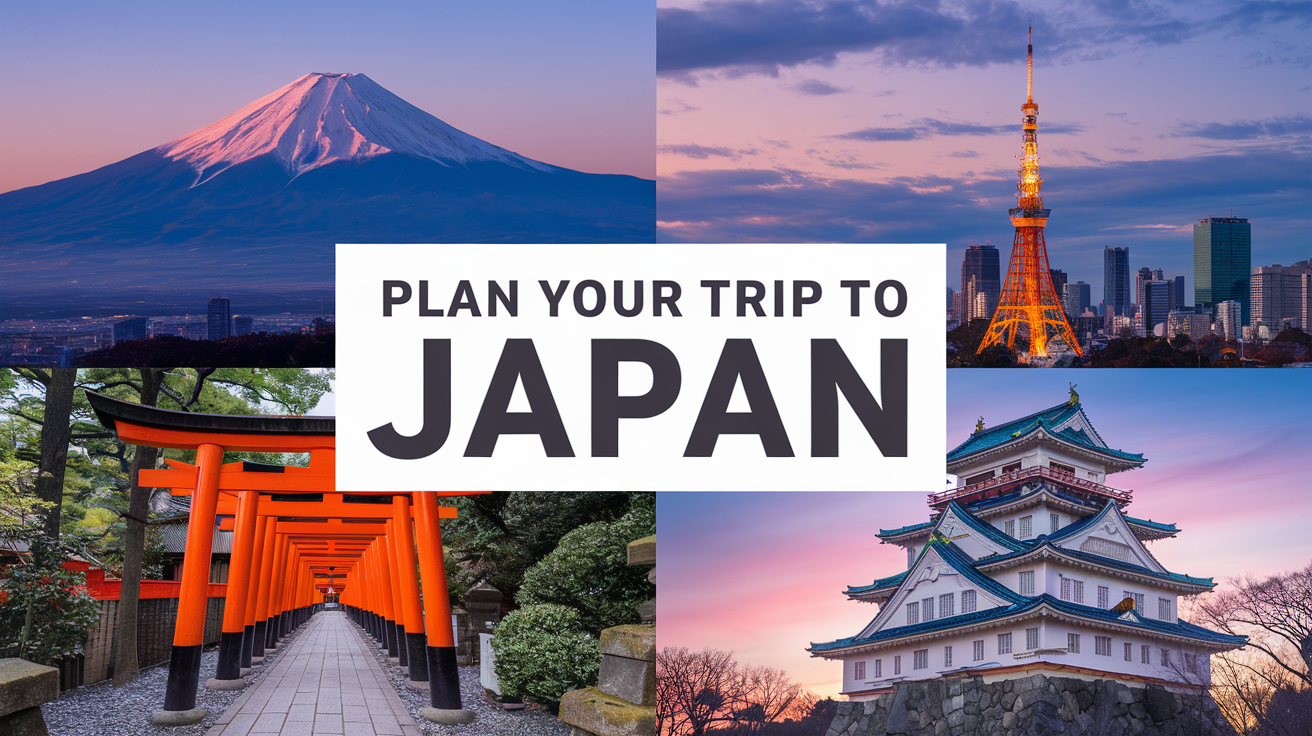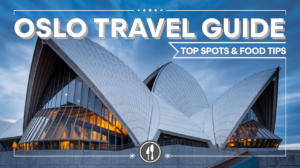Japan is a country where ancient traditions meet cutting-edge modernity. From the bustling streets of Tokyo to the tranquil temples of Kyoto, the snowy landscapes of Hokkaido to the tropical beaches of Okinawa, Japan offers a diverse and unforgettable experience. If you’re dreaming of cherry blossoms, sushi, and historic shrines, this complete guide will help you plan the perfect trip to Japan!
Why Visit Japan?
1. Rich Cultural Heritage: Ancient temples, shrines, and tea ceremonies.
2. Stunning Landscapes: From Mount Fuji to cherry blossoms and hot springs.
3. Modern Marvels: Neon-lit cities, bullet trains, and futuristic technology.
4. Delicious Cuisine: Sushi, ramen, wagyu beef, and matcha desserts.
5. Unique Experiences: Cherry blossom festivals, onsens (hot springs), sumo wrestling, and shopping.
Best Time to Visit Japan
Spring (March-May): Cherry blossom season; perfect for sightseeing and festivals.
Autumn (September-November): Beautiful foliage and pleasant temperatures.
Winter (December-February): Ideal for skiing in Hokkaido and visiting onsens.
Summer (June-August): Hot and humid but full of vibrant festivals like Gion Matsuri.
Visa Requirements for Japan
Visa-Free: Citizens of the US, UK, Canada, and the EU can enter Japan for up to 90 days visa-free.
Visa Application: Check for your country at the Japan Visa Information.
How to Get to Japan
By Air:
– Major airports: Narita International Airport (NRT) and Haneda Airport (HND) in Tokyo, Kansai International Airport (KIX) in Osaka.
– Airlines: Japan Airlines (JAL), All Nippon Airways (ANA), and major international carriers.
By Sea: Ferries are available from South Korea, China, and Russia.
Where to Stay in Japan
Luxury:
– Tokyo: Aman Tokyo, Park Hyatt Tokyo.
– Kyoto: Ritz-Carlton Kyoto, Gion Hatanaka.
Mid-Range:
– Shinjuku: Hotel Gracery Shinjuku.
– Osaka: Cross Hotel Osaka.
Budget:
– Capsule hotels (e.g., 9 Hours), hostels, and budget ryokan (traditional inns).
Top Destinations in Japan
1. Tokyo – The Heart of Modern Japan
Why Visit?
Tokyo is a dazzling metropolis with skyscrapers, shopping districts, and rich cultural experiences.
Top Attractions
1. Shibuya Crossing
– Why Famous: The busiest pedestrian crossing in the world.
– Google Maps: Shibuya Crossing.
2. Tokyo Tower
– Why Famous: A stunning Eiffel Tower-inspired landmark.
– Opening Times: 9:00 AM–10:00 PM.
– Tickets: 1,200 yen ($9 USD).
3. Asakusa and Senso-ji Temple
– Why Famous: Tokyo’s oldest Buddhist temple.
– Google Maps: Senso-ji Temple.
Dining Recommendations
Tsukiji Outer Market: Fresh sushi and seafood.
Shinjuku Omoide Yokocho: Small stalls serving yakitori (grilled skewers).
2. Kyoto – Japan’s Cultural Capital
Why Visit?
Kyoto is famous for its temples, shrines, and traditional geisha culture.
Top Attractions
1. Fushimi Inari Taisha
– Why Famous: Iconic red torii gates that wind up a mountain.
– Google Maps: Fushimi Inari Shrine.
– Tickets: Free entry.
2. Kinkaku-ji (Golden Pavilion)
– Why Famous: A beautiful gold-leaf-covered Zen temple.
– Opening Times: 9:00 AM–5:00 PM.
– Tickets: 500 yen ($4 USD).
Dining Recommendations
Gion: Try Kaiseki, a traditional multi-course meal.
Nishiki Market: Known as “Kyoto’s Kitchen,” offering local specialties.
3. Osaka – Food and Fun
Why Visit?
Osaka is known for its street food, bustling districts, and theme parks.
Top Attractions
1. Osaka Castle
– Why Famous: A historic landmark surrounded by beautiful gardens.
– Google Maps: Osaka Castle.
– Tickets: 600 yen ($5 USD).
2. Dotonbori
– Why Famous: A lively entertainment area famous for neon lights and street food.
Dining Recommendations
Street Food: Try takoyaki (octopus balls) and okonomiyaki (savory pancakes).
Kuromon Ichiba Market: Seafood and fresh produce.
4. Hiroshima – A Symbol of Peace
Why Visit?
Hiroshima is a city that symbolizes hope and peace, with moving landmarks.
Top Attractions
1. Hiroshima Peace Memorial Park and Museum
– Why Famous: Memorial for victims of the atomic bomb.
– Google Maps: Peace Memorial Park.
– Tickets: 200 yen ($2 USD).
2. Miyajima Island
– Why Famous: Known for the floating Torii gate and Itsukushima Shrine.
5. Hakone – Hot Springs and Mount Fuji Views
Why Visit?
Hakone is famous for its onsens (hot springs) and views of Mount Fuji.
Top Attractions
1. Lake Ashi Cruise
– Why Famous: Scenic boat rides with views of Mount Fuji.
2. Onsen Experience
– Visit ryokan like Hakone Yuryo for a relaxing soak.
Transportation in Japan
JR Pass: The Japan Rail Pass is a cost-effective option for unlimited train travel. Purchase before arriving at JR Pass Official Site.
Tokyo Metro and City Transport: Use IC cards like Suica or Pasmo for local trains and buses.
Taxis: Reliable but expensive.
Budget Breakdown
Accommodation: $50–$150 USD/night (budget to mid-range).
Meals: $20–$50 USD/day (street food to mid-range restaurants).
Transport: $250 USD for a 7-day JR Pass.
Attractions: $150–$200 USD for a week of sightseeing.
Travel Tips for Japan
1. Learn Basic Phrases: “Arigatou” (Thank you) and “Sumimasen” (Excuse me).
2. Cash is King: While credit cards are accepted in cities, carry yen for smaller shops.
3. Respect the Culture: Follow etiquette in temples, shrines, and public places.
4. Public Wi-Fi: Use a pocket Wi-Fi or SIM card for constant connectivity.
Conclusion
Japan is a country like no other, offering something for every traveler—be it the neon-lit streets of Tokyo, the serene temples of Kyoto, or the natural beauty of Mount Fuji. With this guide, you’re ready to explore Japan with confidence. Plan your adventure today and experience a perfect blend of tradition, culture, and innovation.
Call-to-Action:
Ready to explore Japan? Share your travel plans or favorite experiences in the comments below, and subscribe for more inspiring travel guides!




